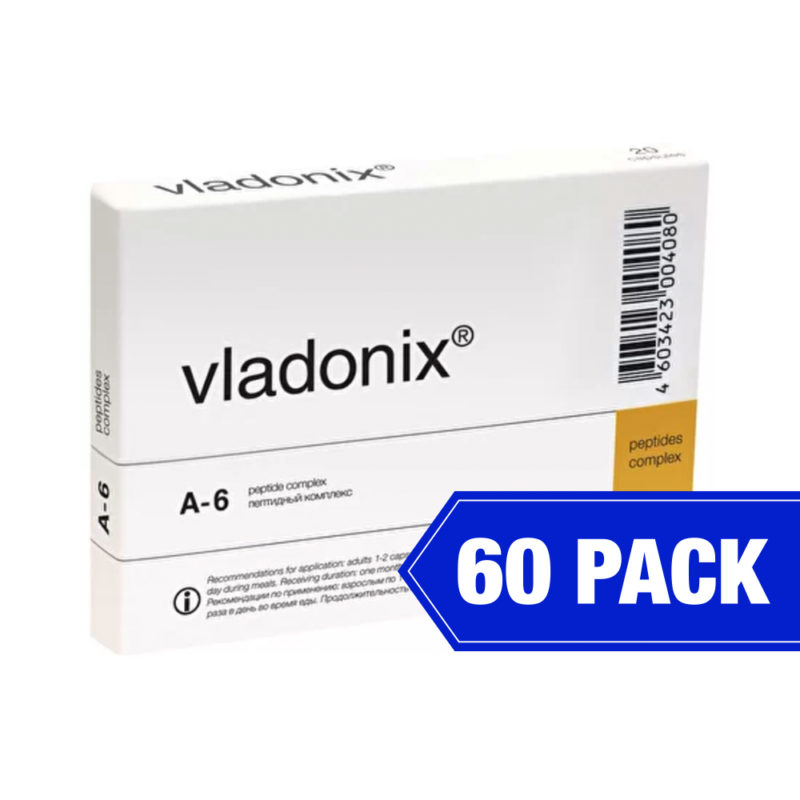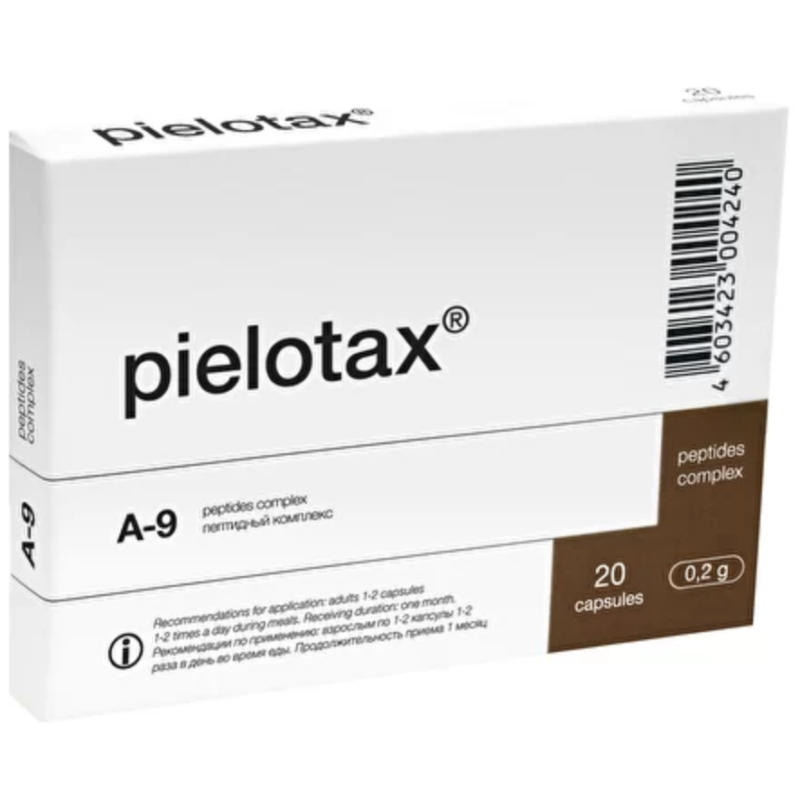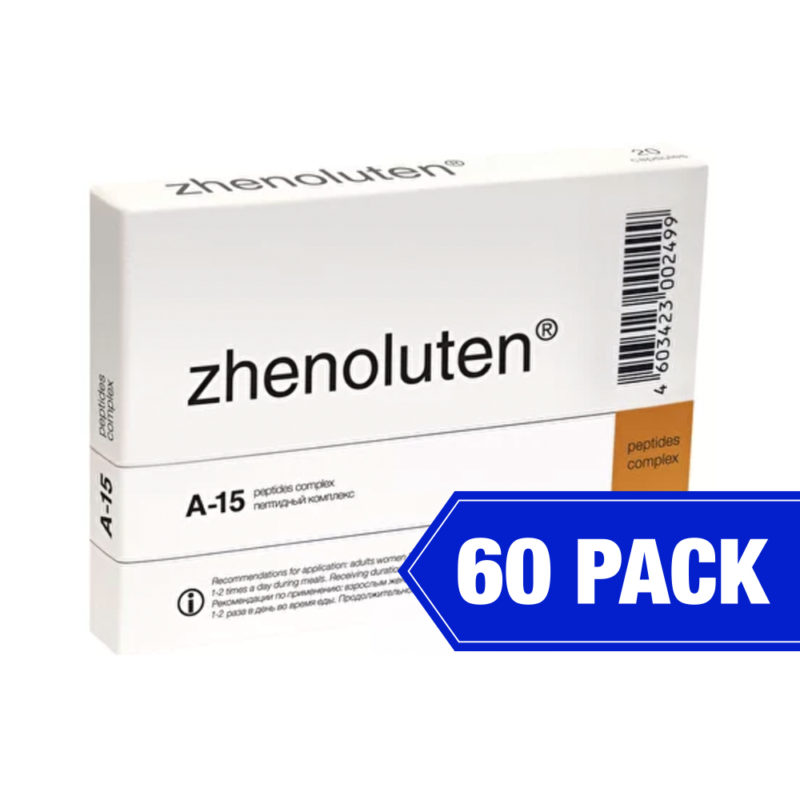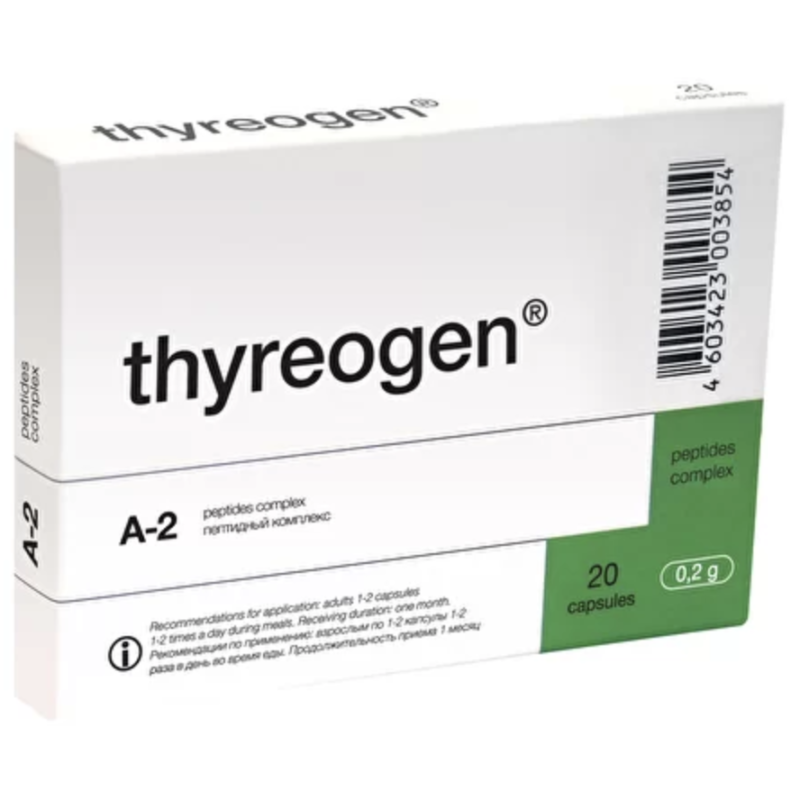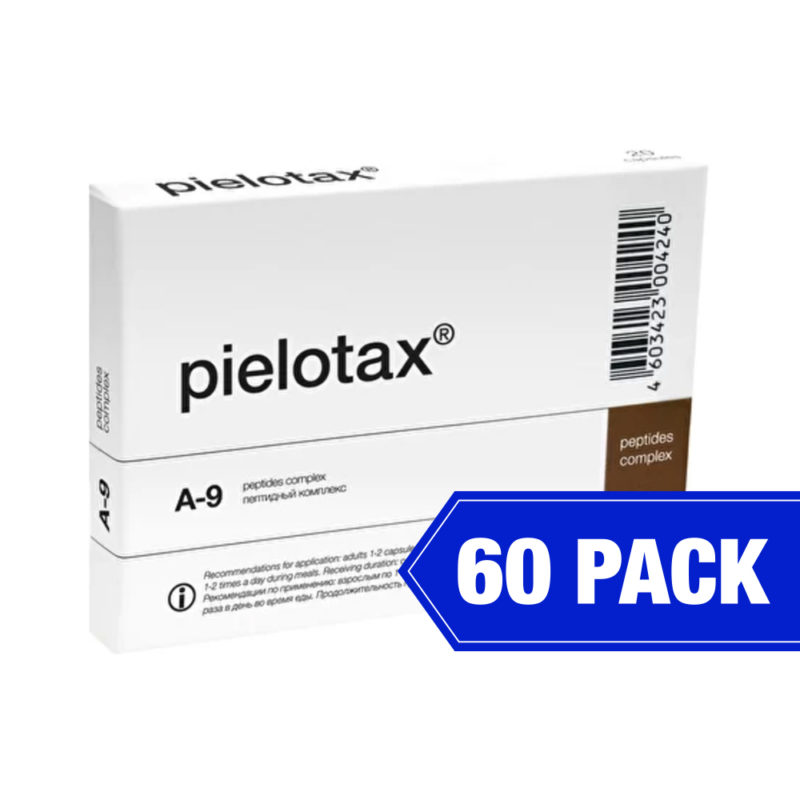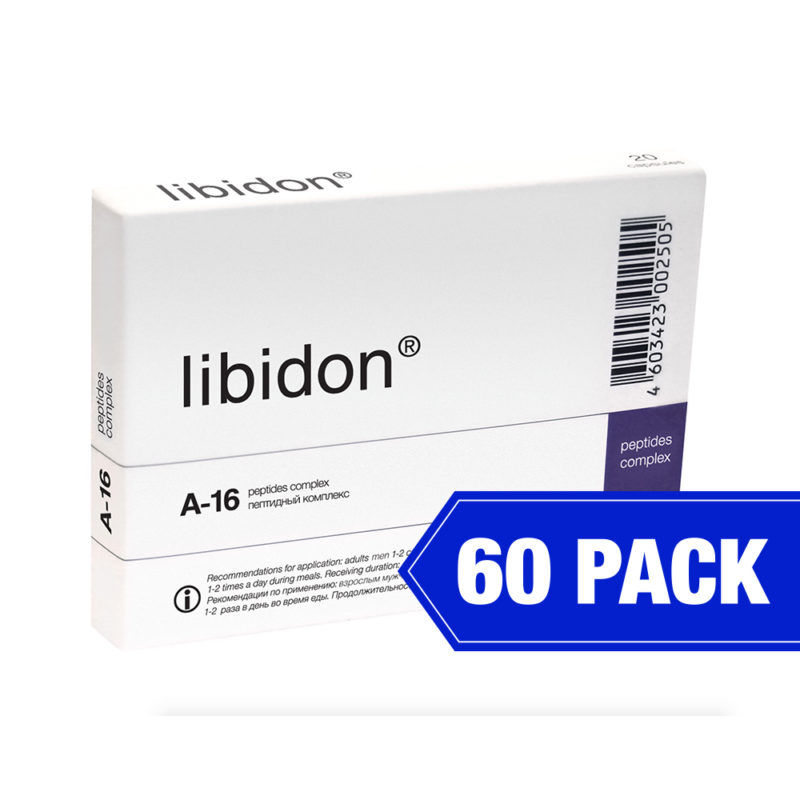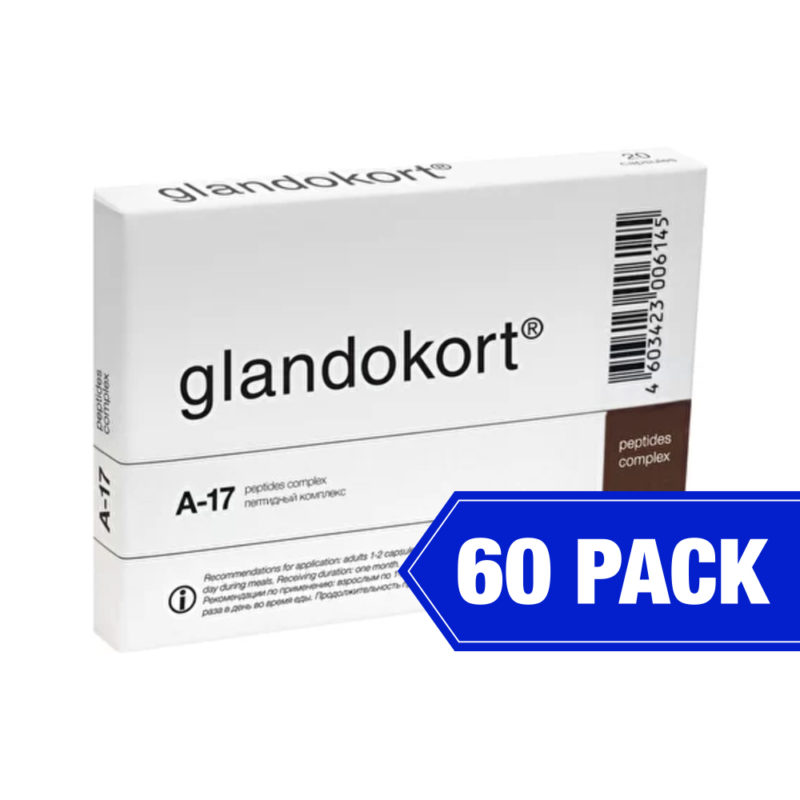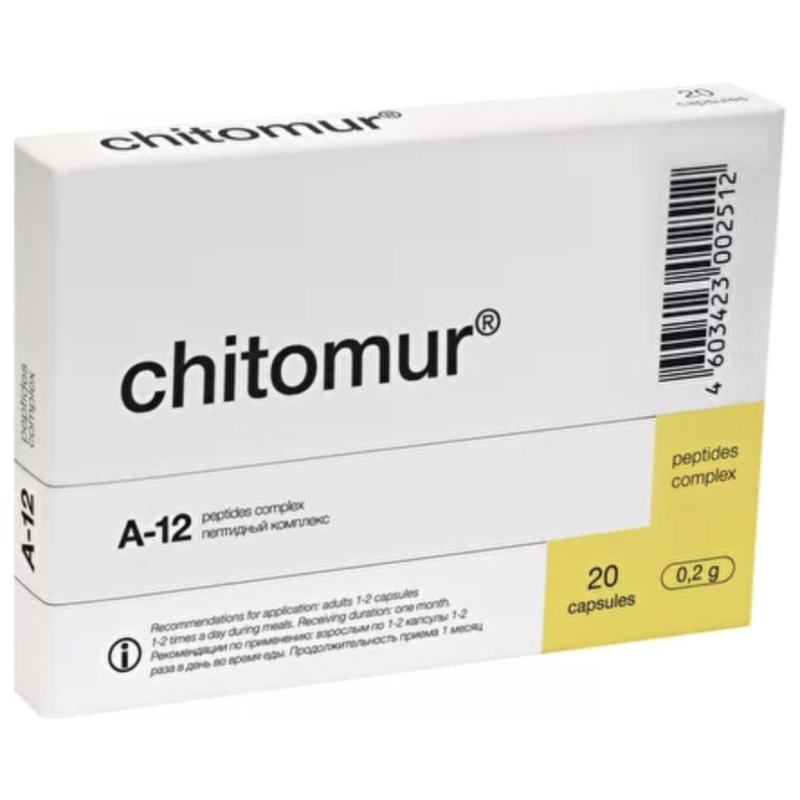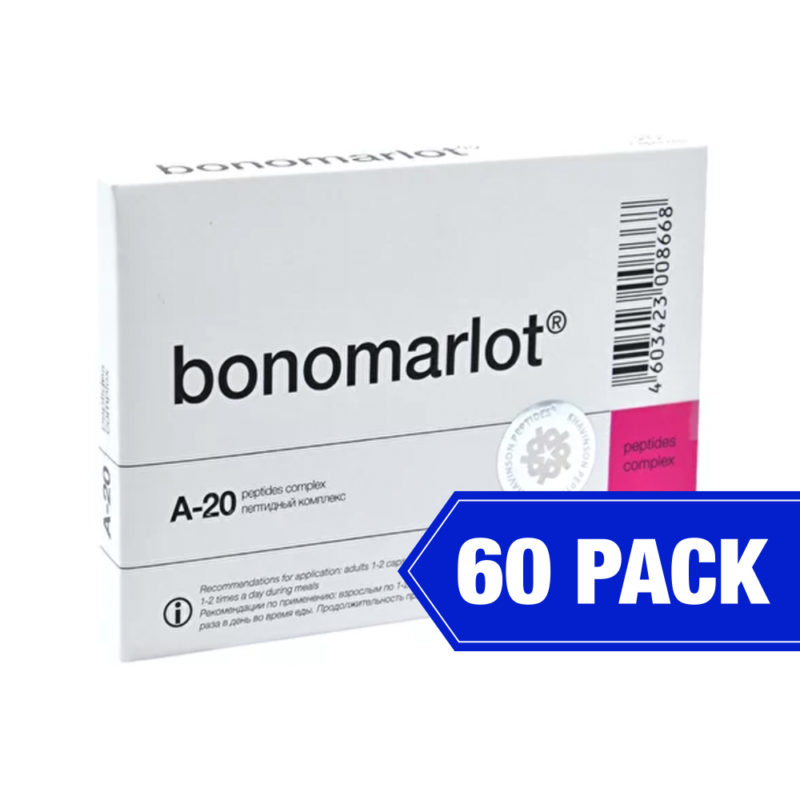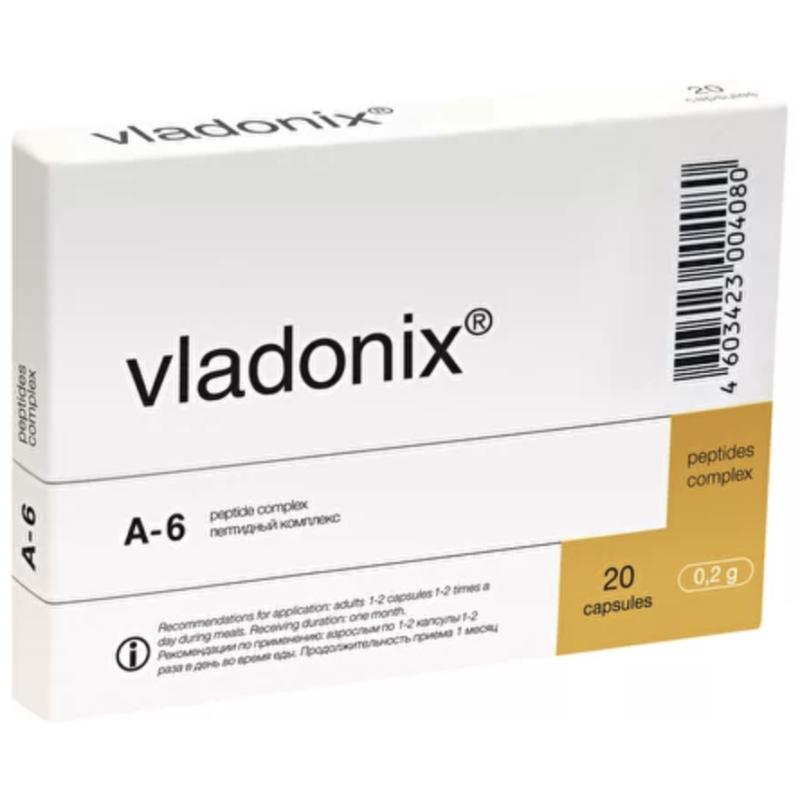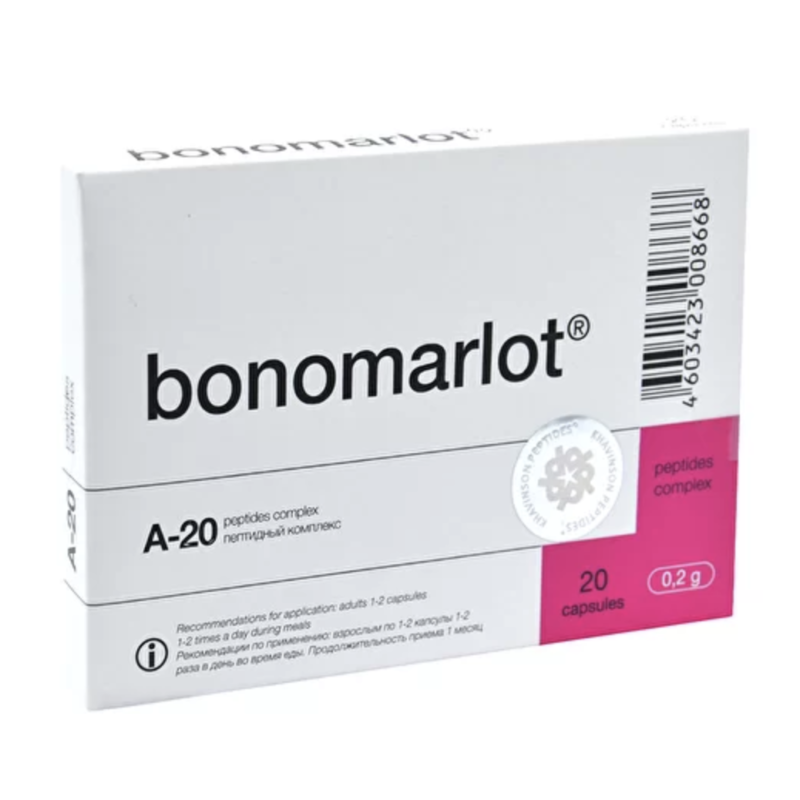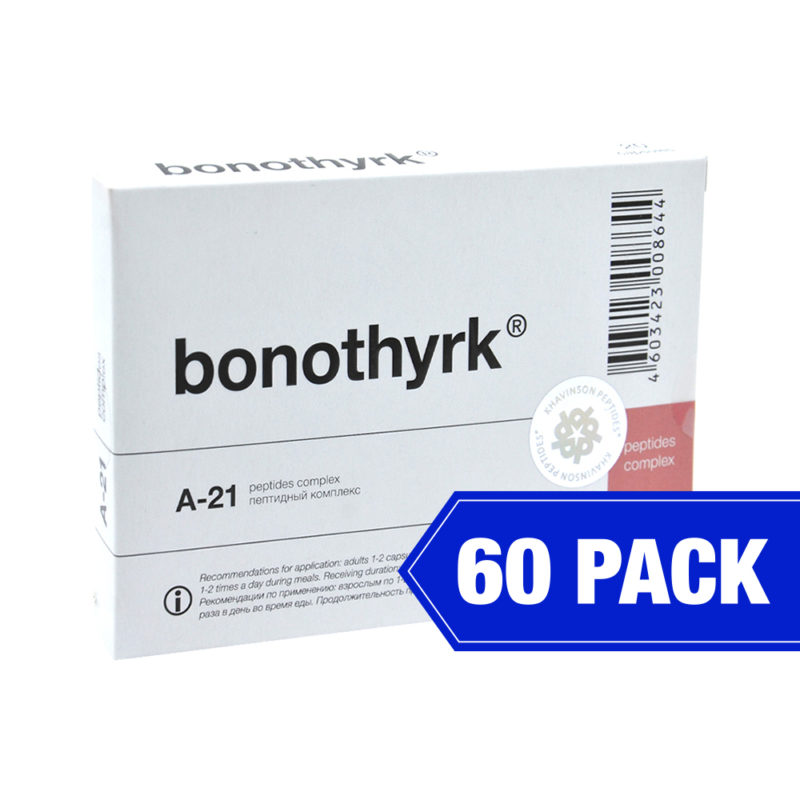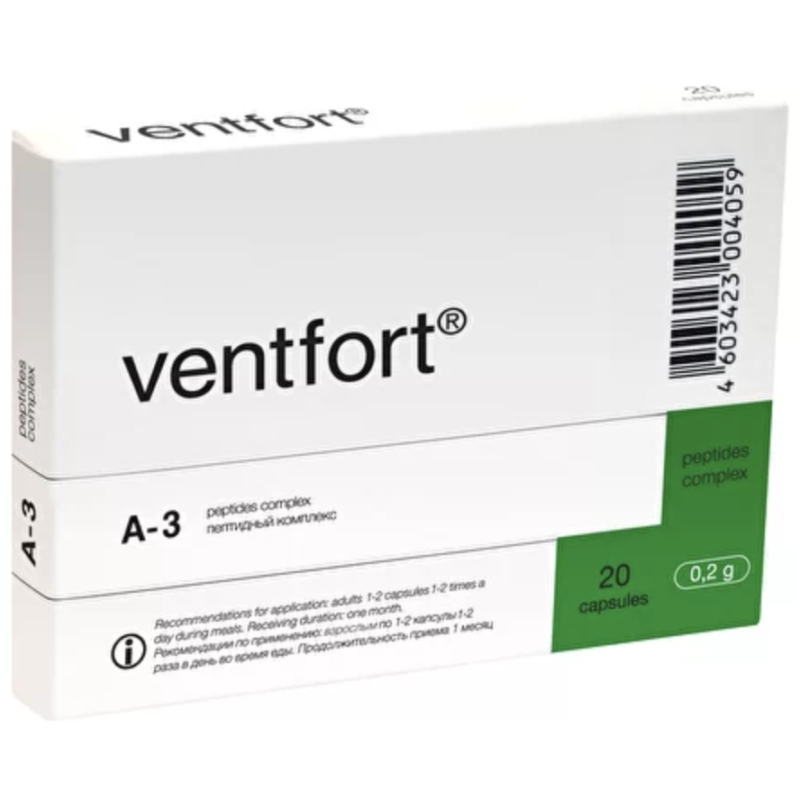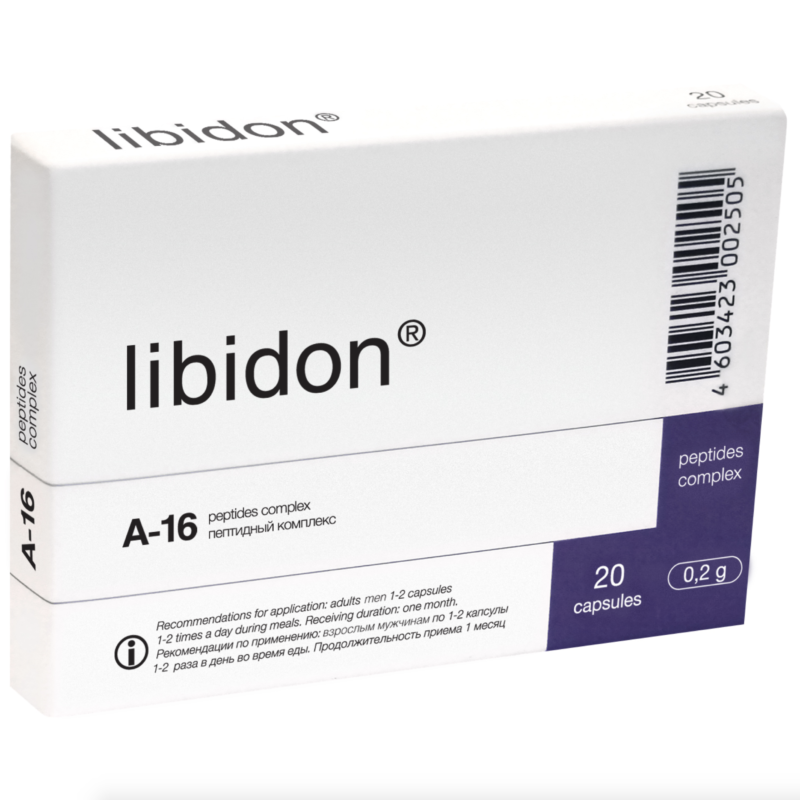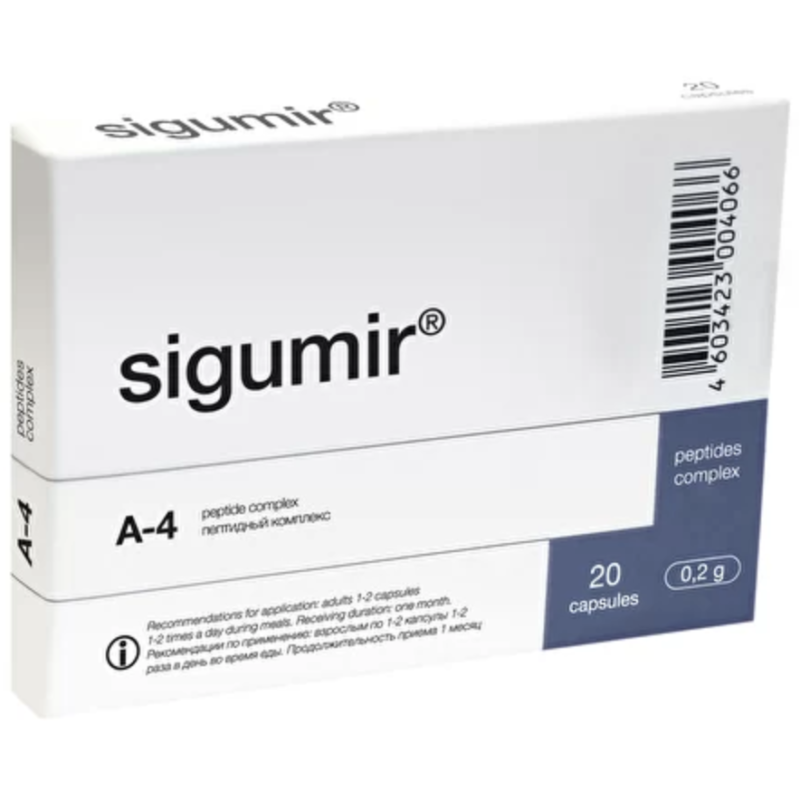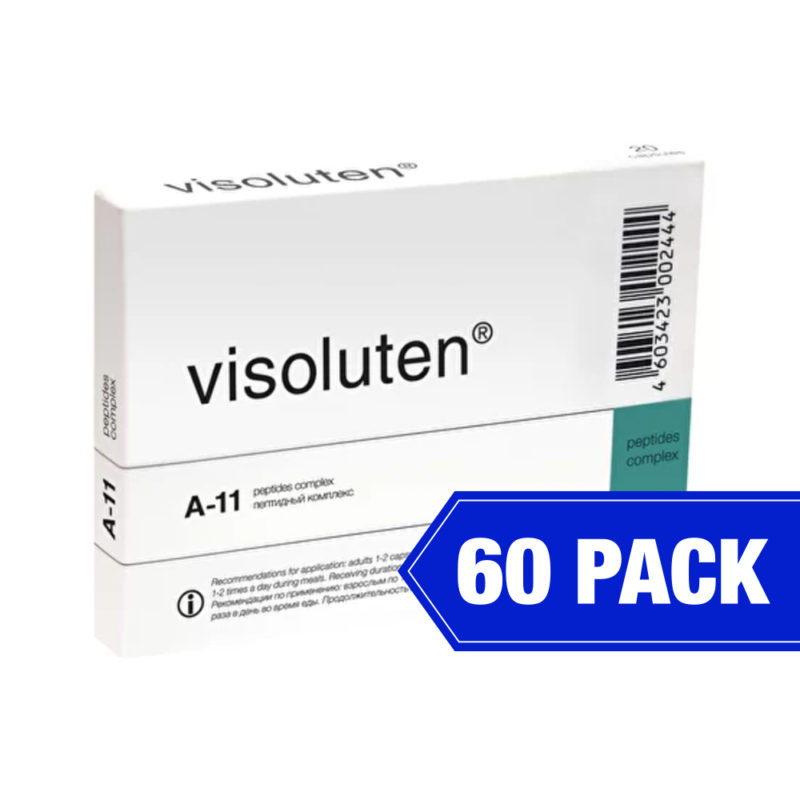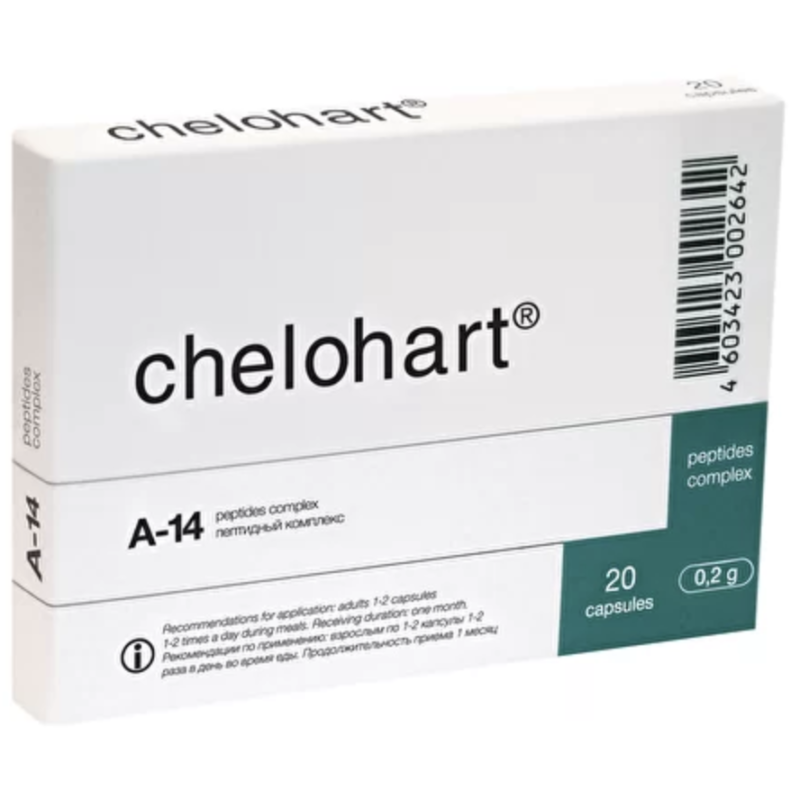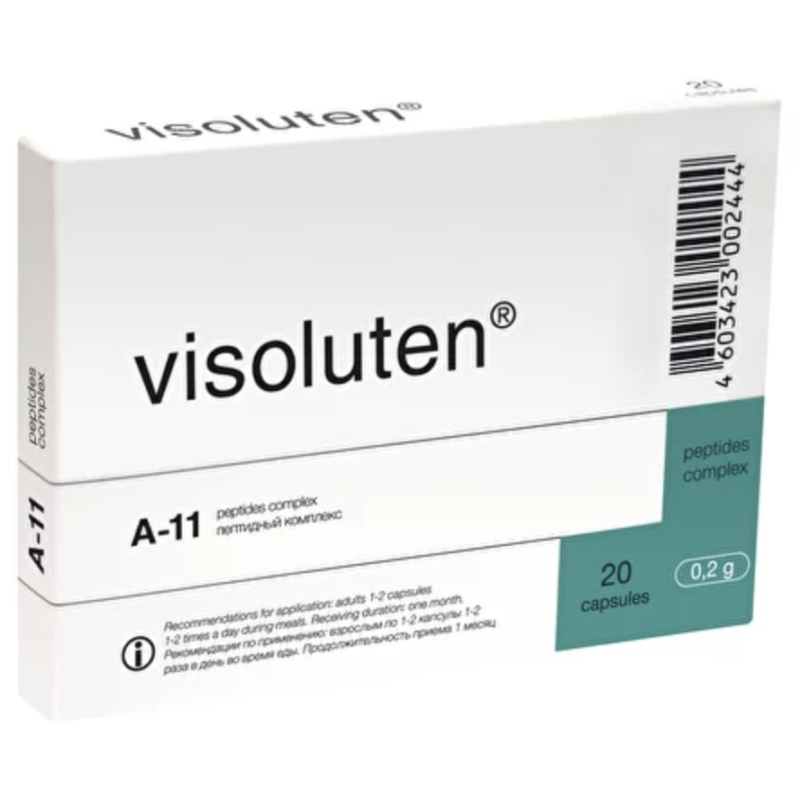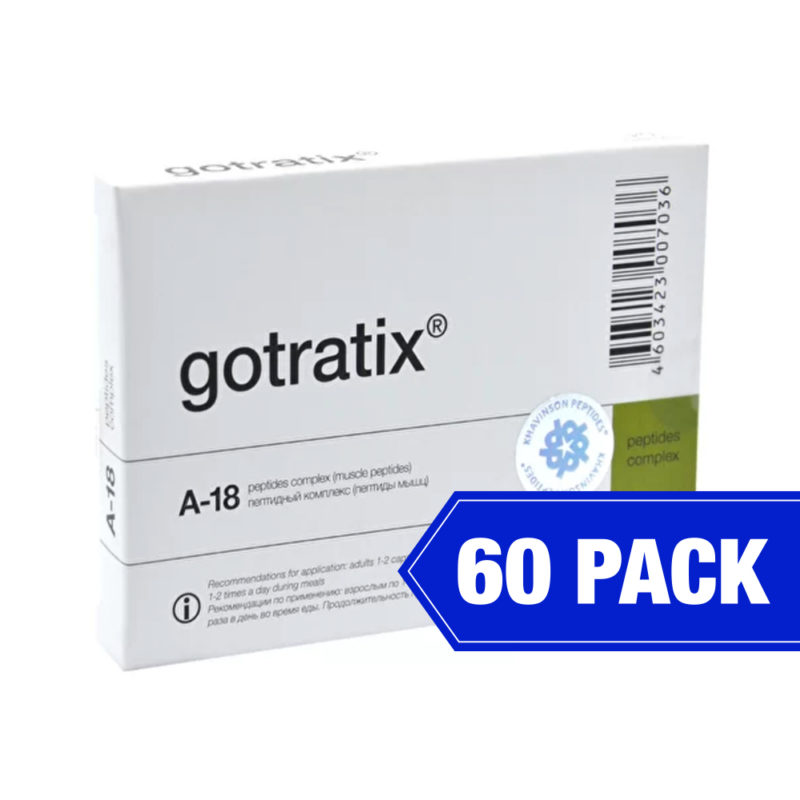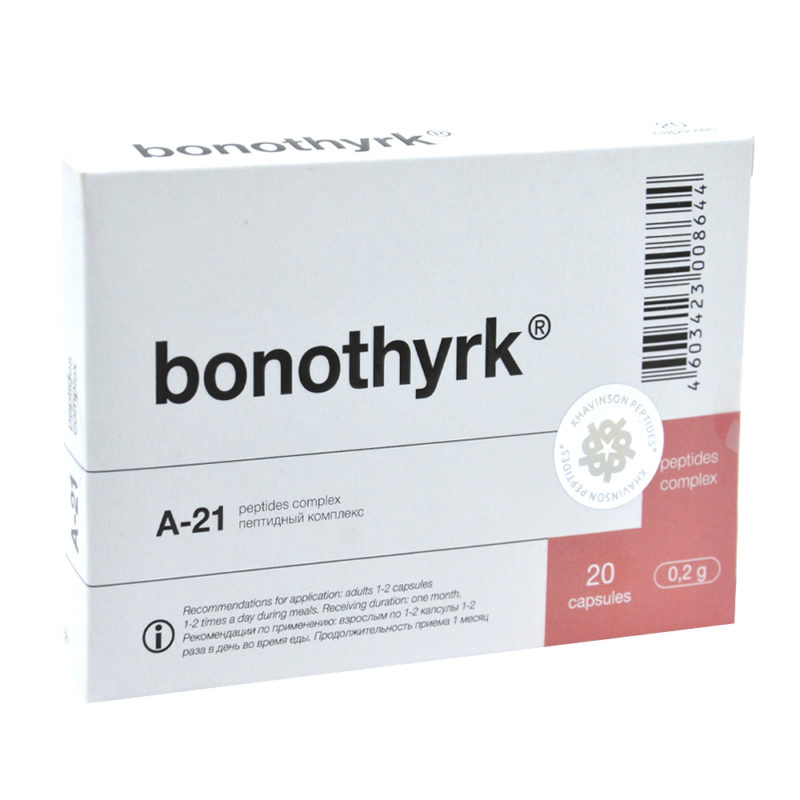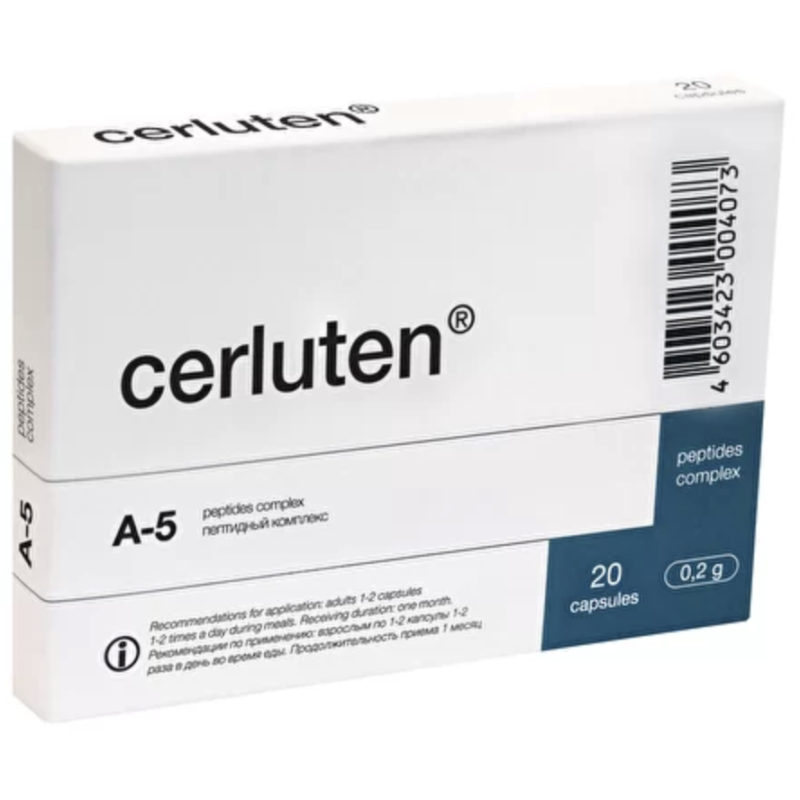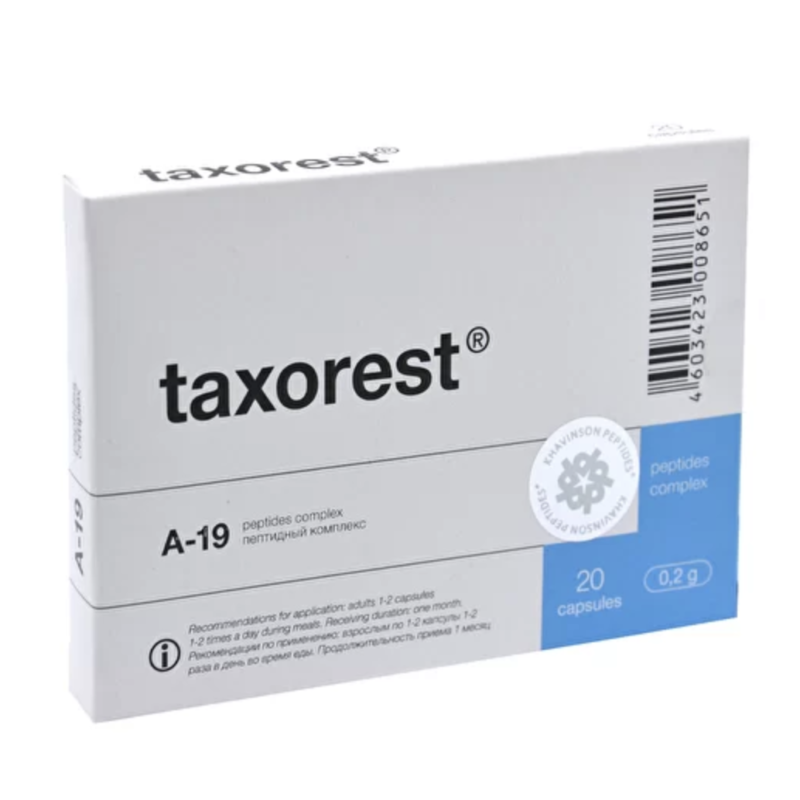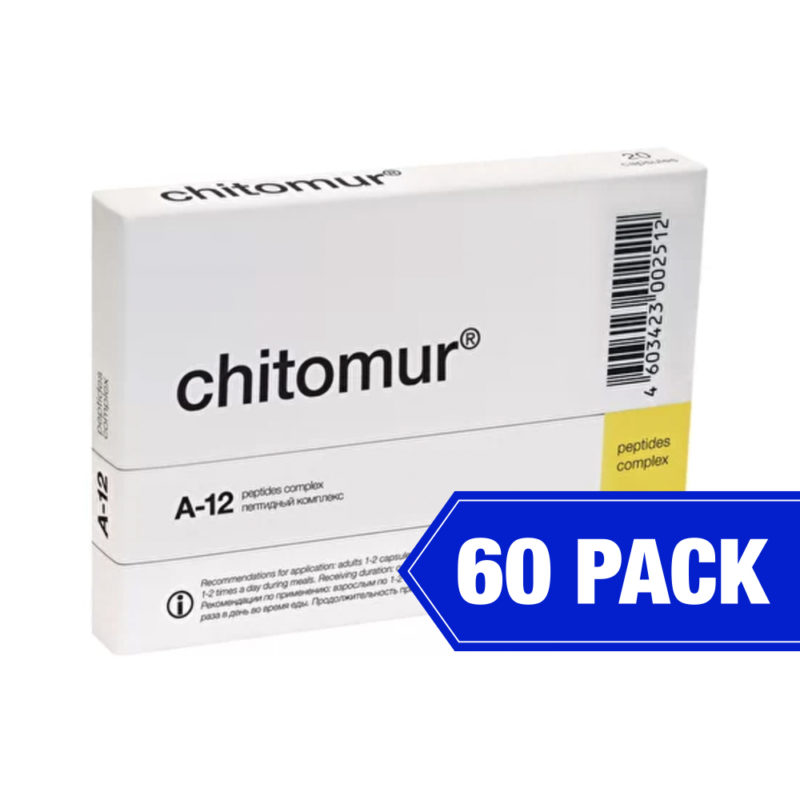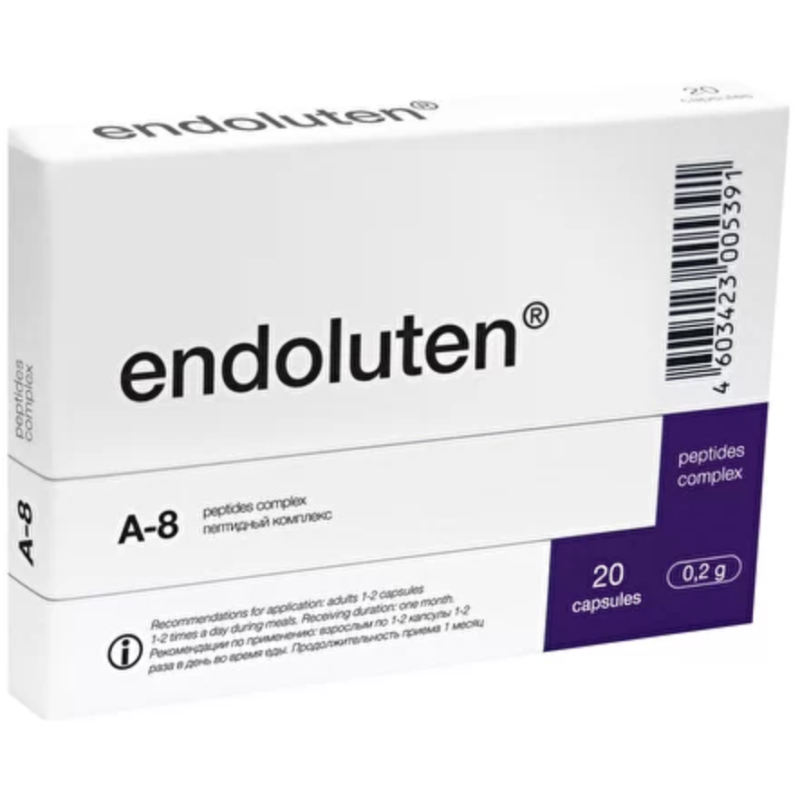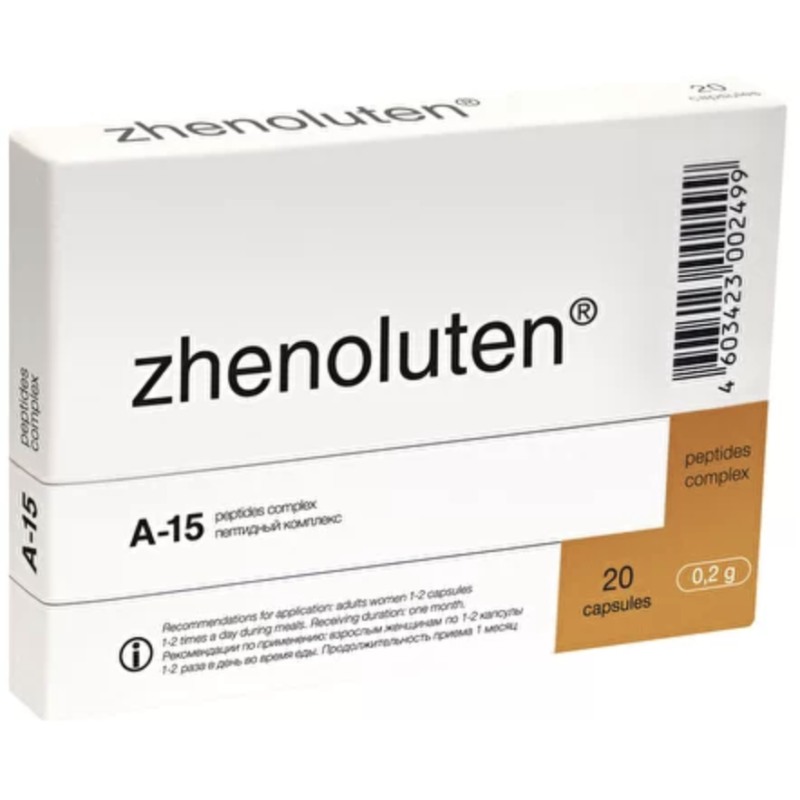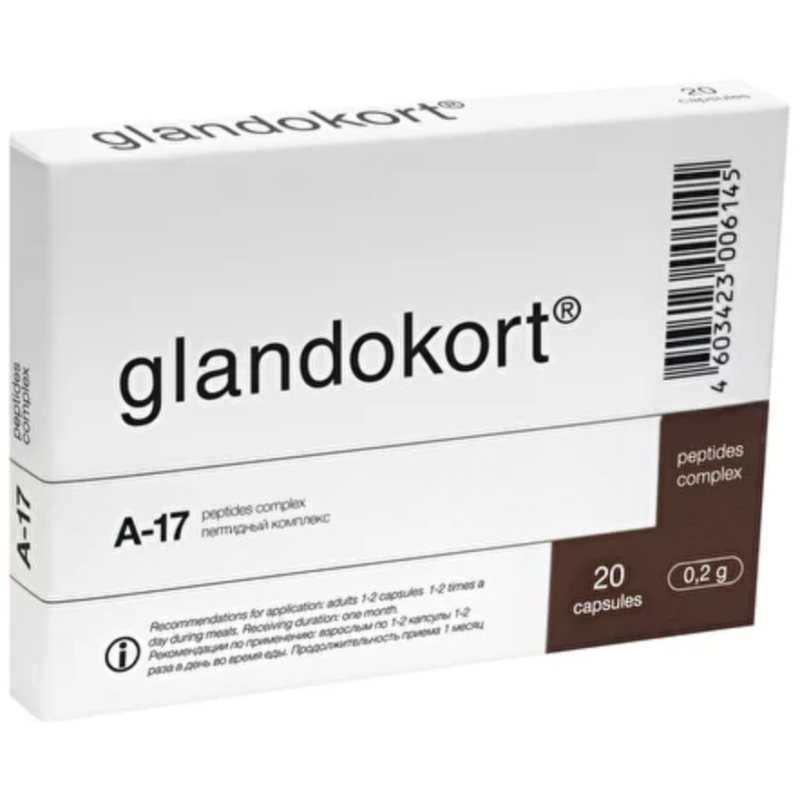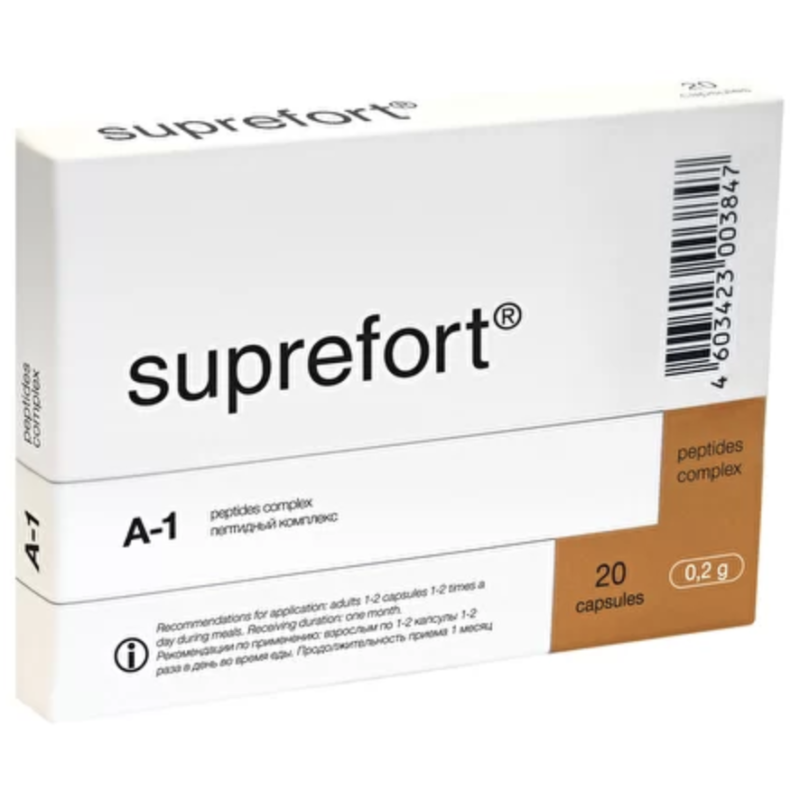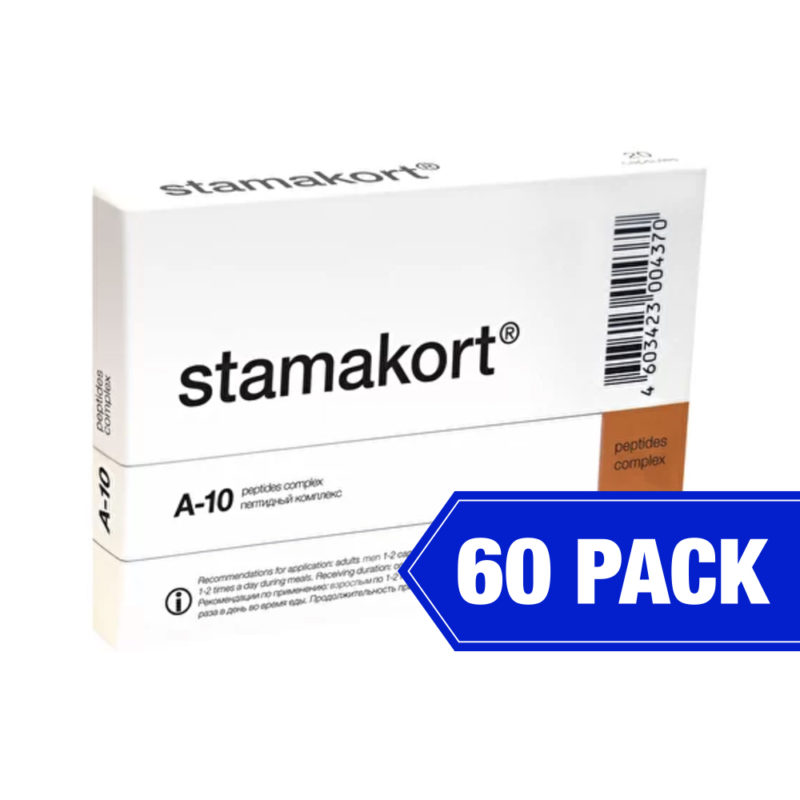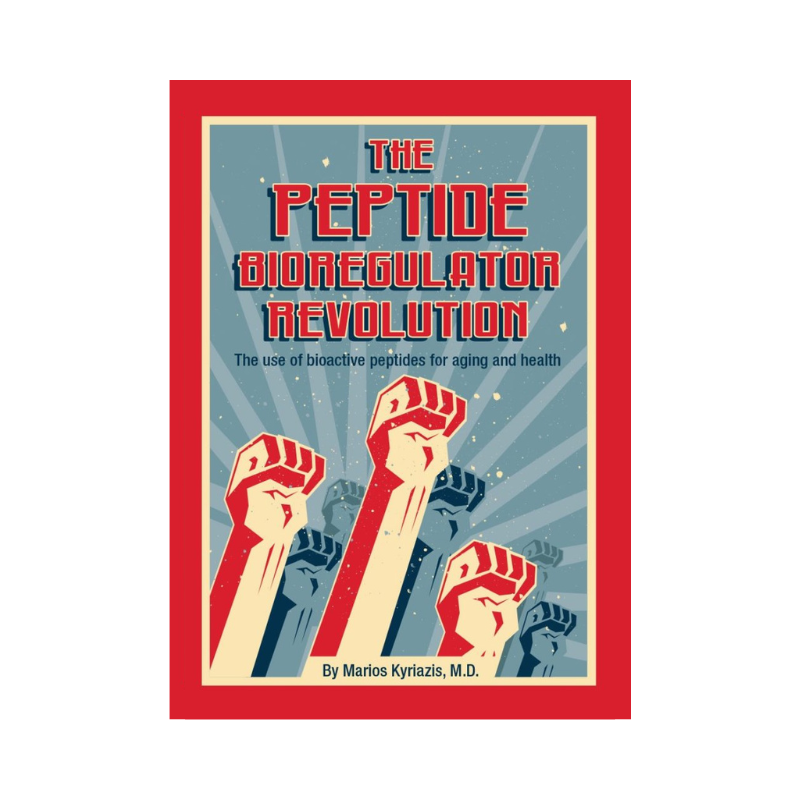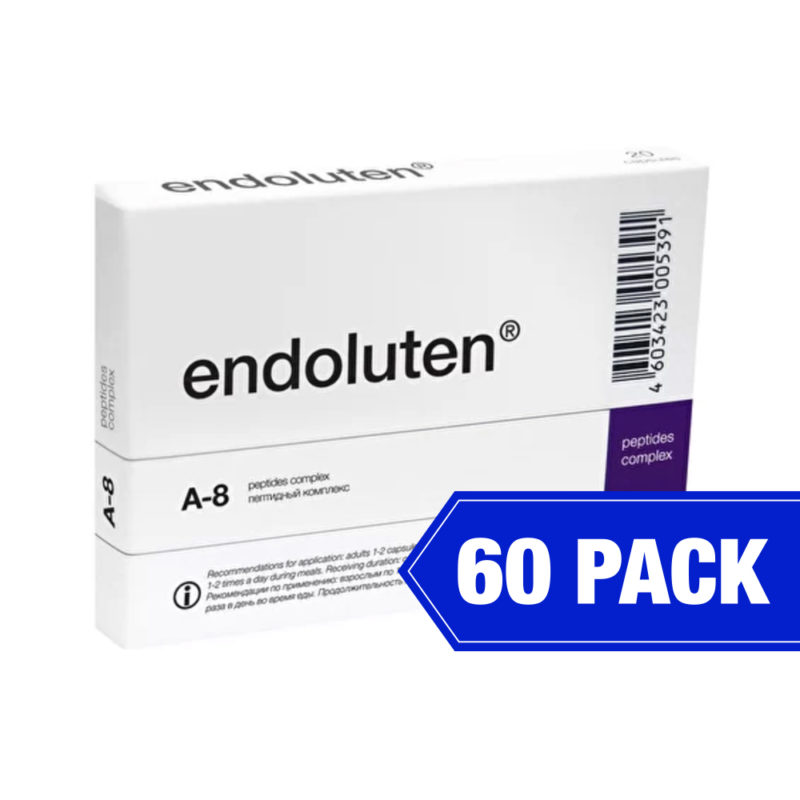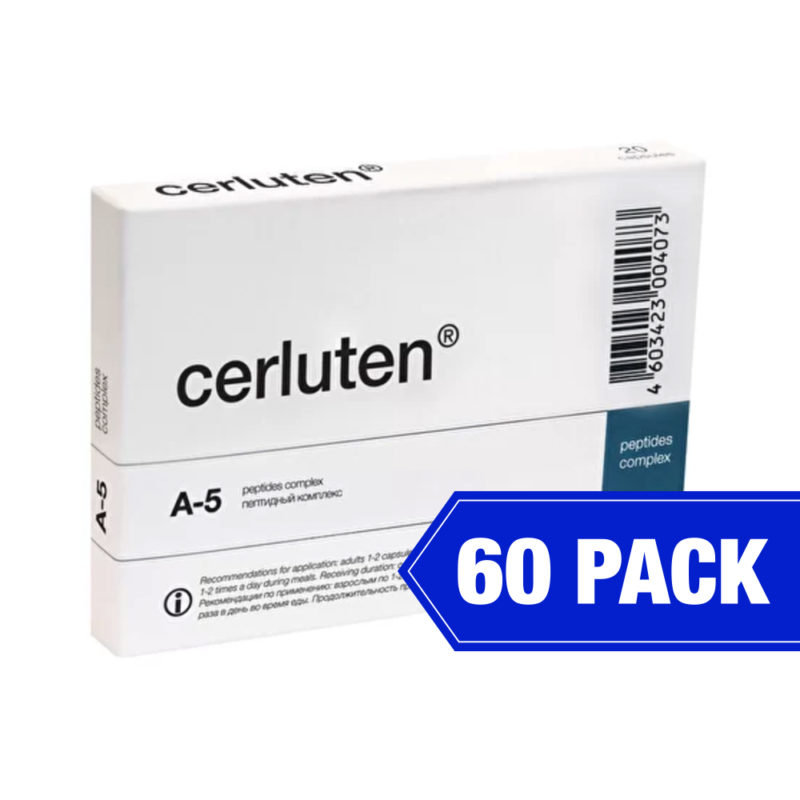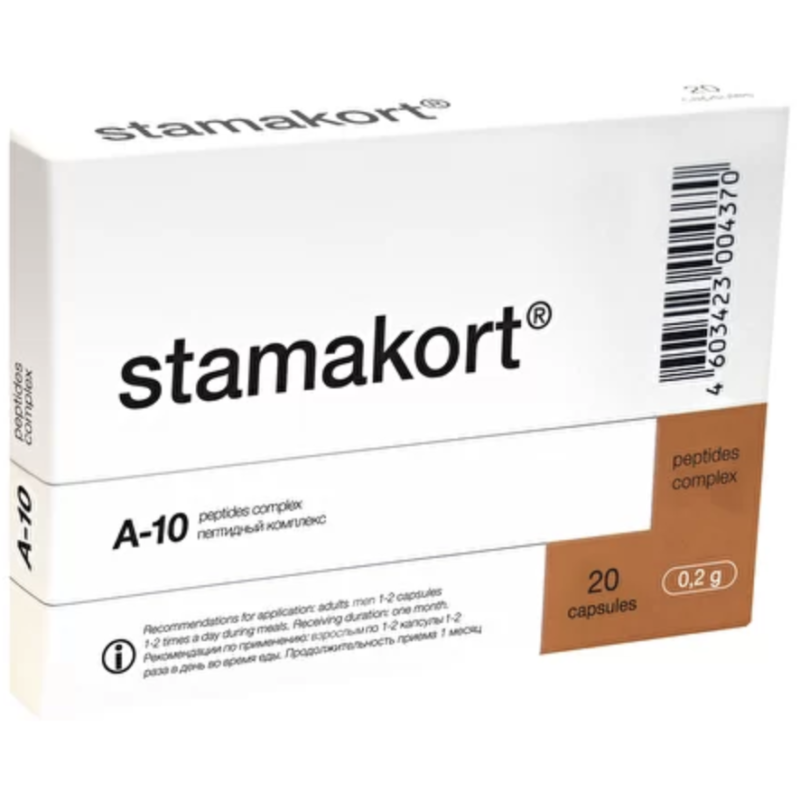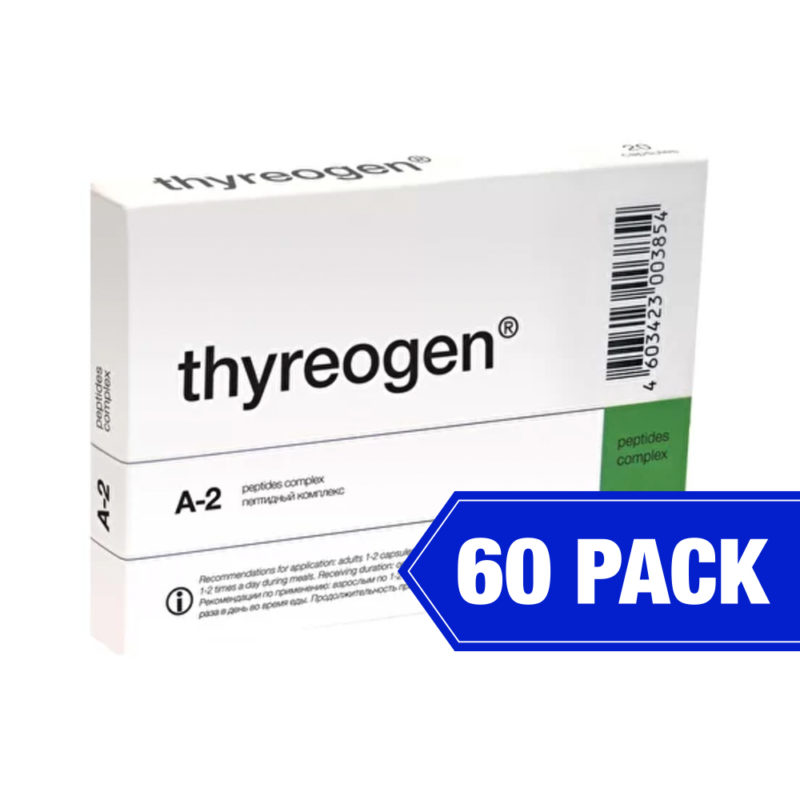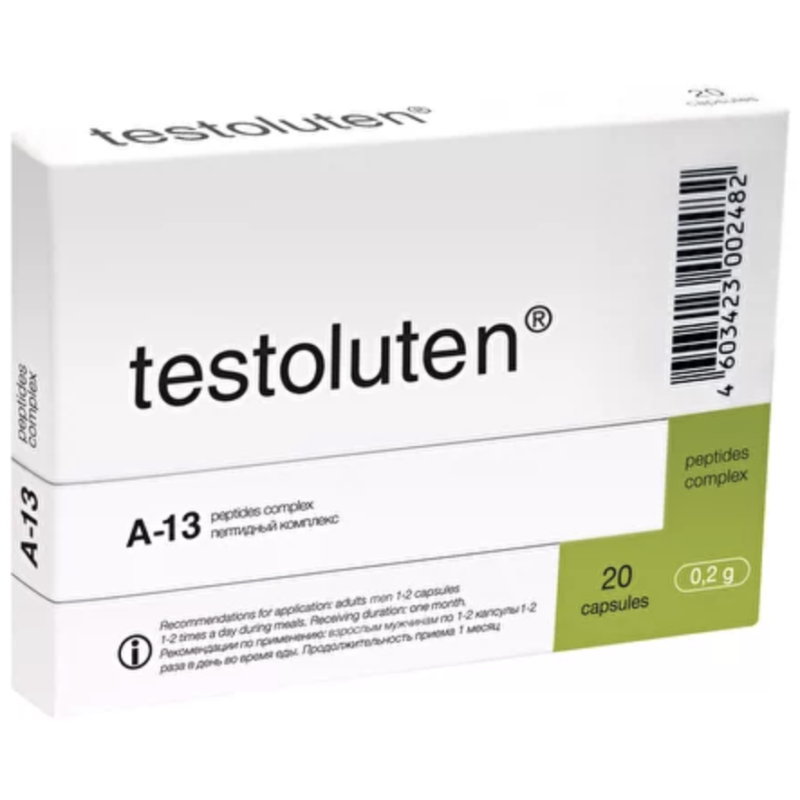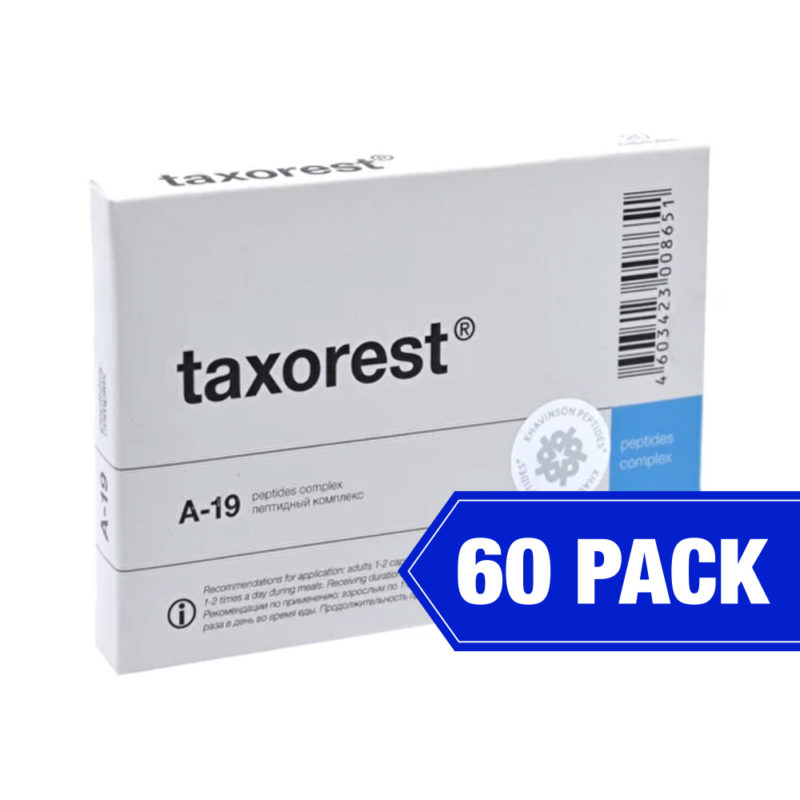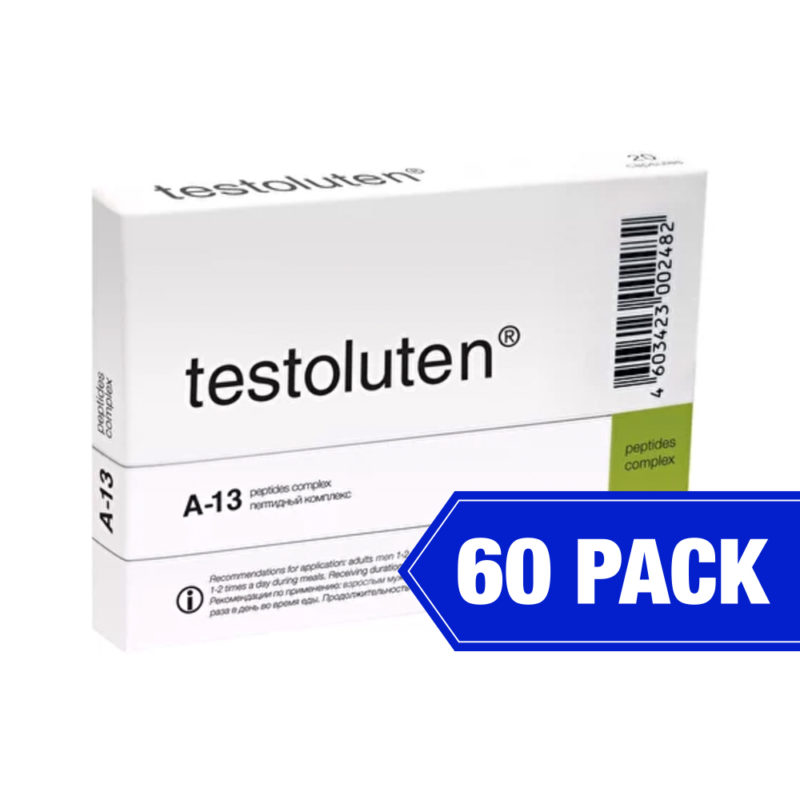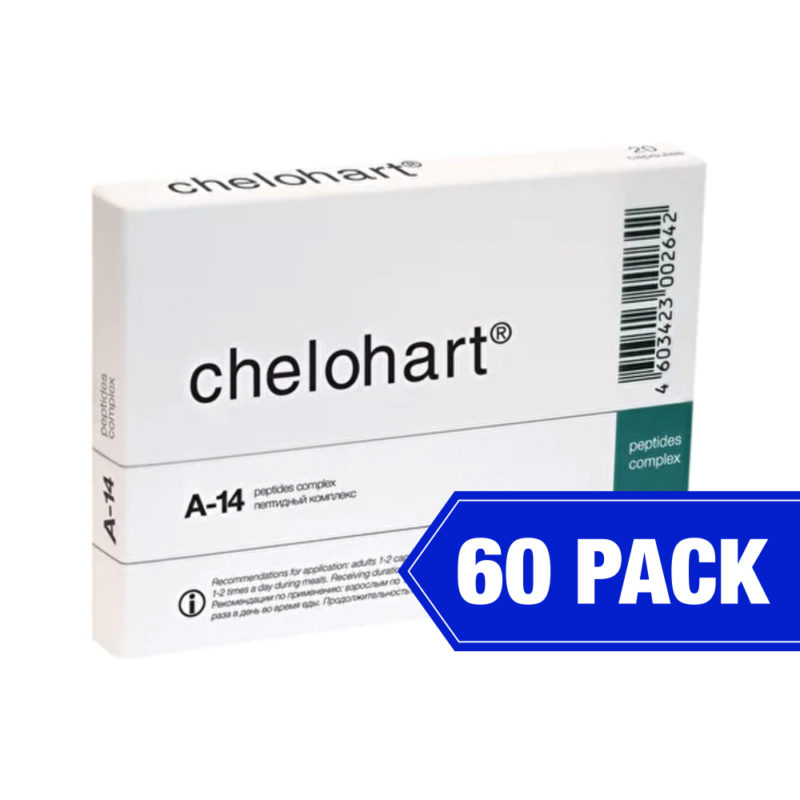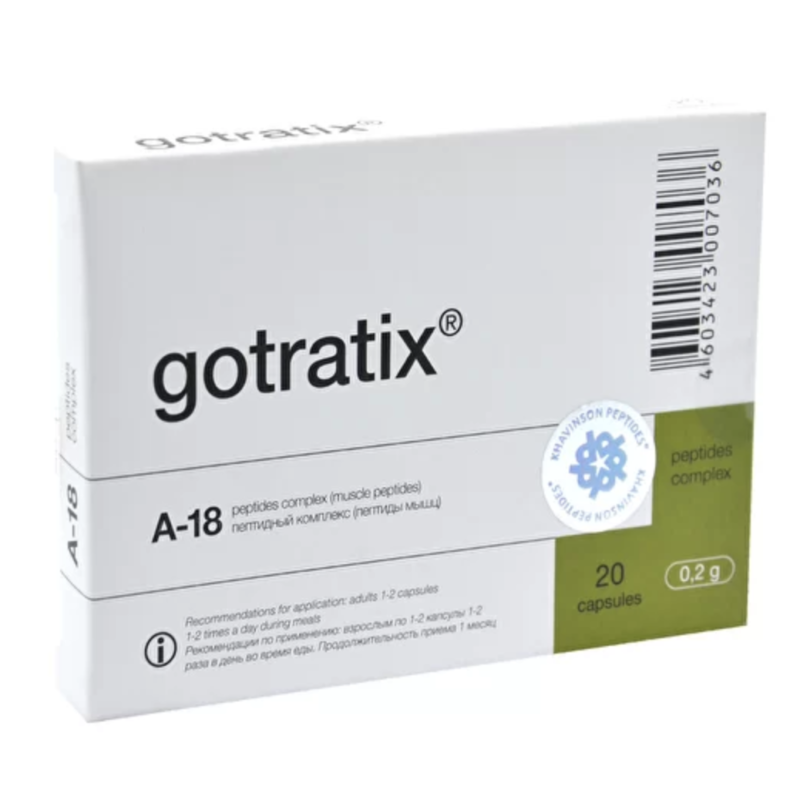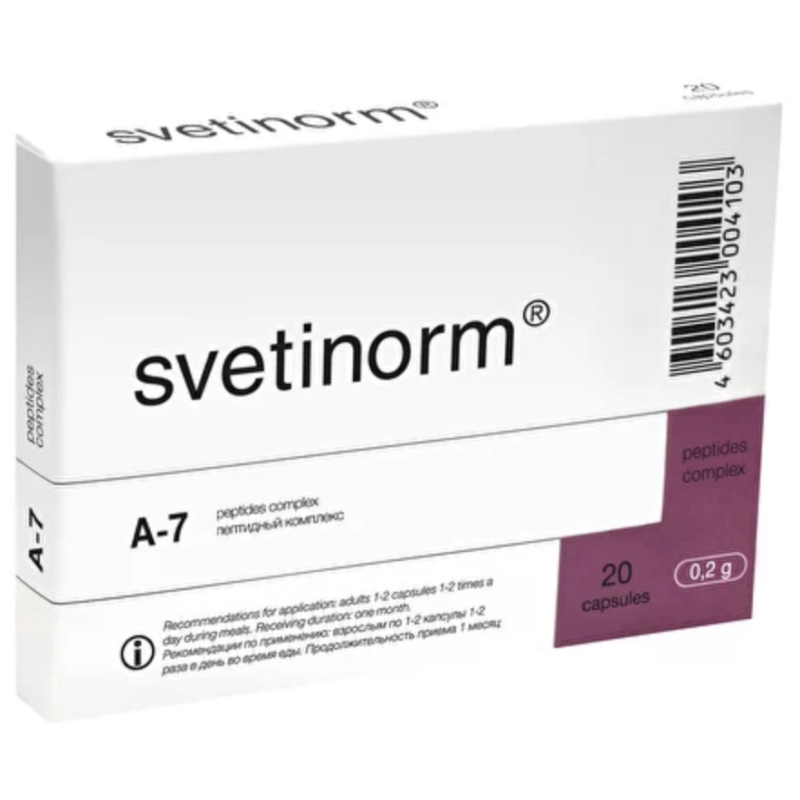Physiological Role of Short Peptides in Nutrition
Translated from Byulleten’ Eksperimental ‘noi Biologii i Meditsiny, Vol. 135, No. 1, pp. 4-10,
Here we review new data about the physiological role of short peptides and their use as biologically active food additives (parapharmaceutics). Some approaches to the development of peptide preparations for peroral administrations are considered and the mechanisms of non-specific and tissue-specific effects produced by peroral peptide parapharmaceutics are discussed. Particular attention is given to biological properties of short peptides synthesized at the St. Petersburg Institute of Bioregulation and Gerontology. These peptides hold much promise for the synthesis of parapharmaceutics increasing organism’s resistance to extreme factors and preventing accelerated aging and age-related diseases.
Endogenous peptides are involved in the compensatory and adaptive response of the organism to stress and disturbances in homeostasis. The peptide system plays a major role in neuroimmunoendocrine interactions [9].
Despite multilevel hierarchy, the main functions of homeostasis-regulating systems are coordination of biosynthesis and maintenance of stable genetic composition of cells in organs and tissues. Disturbances in the peptide-mediated regulation and transfer of informational molecules between cells lead to the development of pathological states associated with decreased organism’s resistance to destabilizing exogenous and endogenous factors.
Much progress was recently achieved in the synthesis of complex peptide-based preparations. Clinical efficiency of these drugs is extensively studied to substantiate their use in combination therapy of various diseases and disorders [11,13,20]. This approach is based on the fact that bioregulation in the organism is mediated by various oligopeptides selectively transferring information between the immune, nervous, and other cells. These oligopeptides are formed during partial proteolysis of precursor proteins (e.g., cytokines, growth and thymic factors, and immunoglobulins) in the immediate proximity to the corresponding receptors.
The general principle underlying organization of the protein molecule is that higher structures are determined by lower structures. Therefore, the primary sequence of amino acids includes information required for the formation of the protein molecule [1]. According to modern views, information can be transferred by molecules consisting of 2-4 amino acid residues with polar side radicals.
Homology of protein sequences of most peptide hormones of the gastrointestinal tract (GIT), insulin, calcitonin, and pituitary hormones attests to their common origin. For example, the study of the evolution of these hormones showed that insulin is synthesized in gastrointestinal mucosa in mollusks. Insulin and insulin-like growth factor have the same evolutionary origin. Moreover, insulin is evolutionarily similar to nerve growth factors. It was shown that the amino acid sequence of the peptide with insulin-like activity is similar to that of trypsin inhibitor, somatomedin, and relaxin. Comparative structural analysis of biologically active substances (BAS) secreted by cells of the diffuse neuroendocrine system showed common origin of peptide hormones [12,36].
Institute of Nutrition, Russian Academy of Medical Sciences, Moscow;
*St. Petersburg Institute of Bioregulation and Gerontology, Northwestern Division of the Russian Academy of Medical Sciences
Not only the whole molecule can affect physiological processes. Sometimes fragments of 3-4 amino acid residues are more effective than native compounds. Therefore, the regulation and coordination of functions can be realized via processing of polypeptides. During this process fragments with different activity, specificity, and effects on various physiological systems are cleaved from relatively long chains depending on the needs of organisms. Processing regulation is characterized by considerable plasticity. This process results in rapid and local formation of required regulators from preexistent precursors due to activation of specific peptidases. The mechanism of processing determines the sequence of activation of regulators. Processing regulation is most typical of peptide compounds with the linear structure. Their molecules can undergo considerable conformational changes even after cleavage of a single amino- or carboxyl-terminal amino acid residue. This cleavage is followed by changes in various properties of molecules, e.g., their hydrophobicity and the blood-tissue barriers [7].
A growing body of evidence indicates that regulatory oligopeptides are involved in the growth, development, and regeneration. Many oligopeptides are well-studied compounds regulating various physiological functions, coordination of homeostasis, and adaptation of functional systems to the environment was revised after studies of regulatory peptides performed over the past 2-3 decades.
Nutrition is the major environmental factor that affects the organism over the whole life. Nutrients are metabolized into structural elements of cells, provide physical and mental activity, and determine the health and lifetime. Inadequate nutrition is always followed by negative consequences. Nutrition adequate to the age, professional activity, and state of health is an important factor preventing various human diseases, including cardiovascular (atherosclerosis, myocardial infarction, insult, and hypertension) and gastrointestinal pathologies, metabolic disorders (obesity and osteochondrosis), and tumors.
In developed countries people consume considerable amounts of industrially manufactured food. Technological treatment markedly reduces the contents of vitamins, mineral elements, and other BAS that regulate metabolism and functional activity of various organs and systems in the organism. In modern urbanized society, people receiving traditional nutrient products are extremely predisposed to the development of nutrient deficiency. This determines inability of protective systems in the body to respond adequately to adverse environmental factors and increases the risk of various disorders. The experience of economically developed countries indicates that it is impossible to improve the structure and quality of nutrition by traditional methods. This problem can be solved via development of new alternative methods for the production of chemically pure BAS from natural sources [15].
A long search and use of BAS in practice showed that various chemical compounds with a completely or partially known structure possess biological activity. BAS were efficient during the therapy of diseases and correction of mental and physical disturbances. Recent lines of research involve the analysis of BAS effectiveness in traditional spheres and other fields that develop after the appearance of compounds with new action on living matter.
There is a good reason to introduce the term “systemic preparation”, whose components participate in the regulation of various stages of the same key process. They not only initiate certain stages of this process but also attenuate negative consequences of this activation.
Apart from products of molecular biology, medicinal preparations are synthesized from traditionally used plant and animal products (even with an unknown mechanism of action). A wide use of natural medicinal preparations makes them similar to food products [3].
The theory of functional systems proposed by P. K. Anokhin extended and refined the notion on the mechanisms regulating homeostasis [2]. Functional systems are involved in the regulation of a balance between nutrient substances and removal of xenobiotics and foreign antigens. The theory suggests that they recognize exogenous substrates or metabolites and transfer information to other elements of the regulatory system. After reception of the exogenous substance or metabolite and integration of information from other regulatory systems, the controlling element of this regulatory system generates a signal that triggers the operated or effector component. Information about reception of substances is transferred by hormones or mediators differing from nutrients in their chemical structure. Therefore, regulatory systems can differentiate food substrates and signals. This pathway of information transfer allows the organism to maintain the required signal at a high level even under conditions of pronounced nutrient deficiency. Many secondary messengers of signals are formed from essential compounds present in food products, but not synthesized in the body.
Information about the metabolic state is perceived by ancient (intracellular) and evolutionarily young regulatory systems (endocrine and nervous systems). Allosteric modulation is performed by the ancient regulatory system and responsible for fine adaptive reactions. The regulation of gene activation and repression contributes to the organism’s adaptation to changes in food supply from the environment.
It cannot be excluded that endogenous and exogenous metabolic states are perceived similarly. Information is disintegrated into components, whose intensity is determined by receptors of the nervous and other regulatory systems at the main stages of metabolic processes. Undoubtedly, information transfer is impaired under pathological conditions. The release and accumulation of endogenous compounds (e.g., peptides) transferring abnormal information violate functional activity of regulatory systems. Therefore, consumption of BAS with food products prevents informational chaos in the regulatory systems of patients.
According to Anokhin’s theory attainment of the beneficial result is characteristic of all regulatory systems. It should be emphasized that the effectiveness of regulatory systems developed during long evolution. There is a close relationship between phylogenetically developed systems and certain environmental conditions. The beneficial result can not be achieved under other conditions. Therefore, various anthropogenic factors produce a negative impact on coordinated activity of regulatory systems.
Compounds transducing signals in regulatory systems in organisms at the lower level of food chains enter the organisms of the next levels with food. If the systems in organisms of these coupled elements of the food chain are similar, these compounds can directionally affect the regulatory systems in the consumer organism. The food chain transfers not only energy, nutrients and toxins, but also information [10].
The regulatory systems of the intestine transfer peptides formed from proteins during digestion more rapidly than absorb the amino acid mixture, which are unusual for this organism. The small intestine contains di- and tripeptide transporters that provide absorption of short peptides [22,38]. The rate of transport for dipeptides surpasses that for amino acids. Peptidases in the brush-border membrane of enterocytes cleave 40-60% short peptides to di- and tripeptides. This fact also confirms high nutritive value of BAS and the possibility of regulation and coordination of the functions of regulatory systems in the organism with these BAS.
It should be emphasized that short peptides, including dipeptides, have different sensitivity to hydrolysis with peptidases. Some peptides are weakly hydrolyzed in enterocyte brush border. Other dipeptides, including glycyl-glycyl, proline and hydroxyproline dipeptides, glycyl- sarcosine, carnosine and tripeptide glycyl-sarcosyl-sarcosine, do not undergo complete intracellular hydrolysis and enter the portal vein [32].
It is interesting that insulin, vasopressin, and other hormones include peptide fragments stimulating the growth of microorganisms. Initially these observations produced a conclusion that hormonal regulation in higher animals is similar to regulation of cell division in microorganisms. Since these fragments differ in the amino acid sequence, it was hypothesized that peptides are characterized by the common steric configuration with stimulatory activity [10]. Further studies showed that in bacteria these fragments were formed from amino acids absent in the medium and making the composition more balanced [33]. The stimulatory effect of casein di- and tripeptides on the growth of nematodes was explained similarly [37]. It was concluded that these peptides do not belong to endogenous growth-regulating factors.
Addition of Gln-containing dipeptides Ala-Gln and Gly-Gln to parenteral nutrition prevents disturbances during stress and malnutrition [24,27]. Parenteral nutrition enriched with Gly-Gln dipeptide prevents atrophy of the lymphoid tissue in the small intestine and promotes the recovery of secretory immunity (as differentiated from standard parenteral nutrition), which is related to the increase in IgA content in the intestinal and upper respiratory tract mucosa after intranasal infection of mice with influenza virus H1N1 [30]. Parenteral nutrition enriched with Ala-Gln dipeptide normalizes the nitrogen balance, maintains intracellular Gln content, restores the total lymphocyte count in the peripheral blood, provides intestinal permeability and absorption, and shortens hospitalization period for surgical patients (42-86 years) after abdominal operations [34].
Peroral peptide preparations with different pharmacological activity are now synthesized and intensively studied [23,39,41]. However, these peptides are characterized by low resistance to enzyme hydrolysis in the stomach and small intestine. The synthesis of modified peptides or enzyme-resistant polymer conjugates would solve this problem [25,26,28,29,31]. Pharmacokinetics of peroral peptide preparations and the role of peptide transport in the small intestine were extensively studied [35,40,42].
Progressive involution of the gastrointestinal mucosa during aging is associated with changes in the rate of regeneration and dystrophic, and atrophic processes. They are characterized by shortening and thickening of villi, decrease in the number of microvilli, and structural impairment of the glicocalix [5,6] Activity of enzymes involved in final cleavage of disaccharides, dipeptides, and esters of phosphoric acid is modified [16].
Age-related changes in the intestinal mucosa and peculiarities of short peptide absorption provided the basis for synthesizing biologically active food additive from carnosine (β-Ala-His), whose gero-protective effects are primarily related to antioxidant activity of the peptide [4].
Peroral administration of tetrapeptide Asn-Leu-Pro-Arg (NLPR) to rats with memory disturbances enhances perceptivity, induces behavioral response, and promotes expression of nerve growth factor (NGF) in the brain. NLPR improves memory via initiation of NGF expression and holds much promise for the therapy of memory disturbances [43].
Studies of structural and functional characteristics of peptides elucidated the mechanism of their effects. Amino acid analysis of polypeptide preparations performed at the St. Petersburg Institute of Bioregulation and Gerontology resulted in the synthesis of their structural analogues. The dipeptide Vilon (Lys-Glu) was synthesized after amino acid analysis of a complex thymic preparation Thymalin and studies of immunobiological and physicochemical properties of amino acids. The tetrapeptide Epithalon (Ala-Glu-Asp-Gly) was constructed after amino acid analysis of the polypeptide preparation from the pituitary gland Epithalamin.
Computer analysis of amino acid sequence of polypeptides (Eucaryotae databank) presented in the PIR bank showed that fragments Lys-Glu and Ala-Glu-Asp-Gly are present in various endogenous regulatory peptides. Lys-Glu is a fragment of interleukin-1β (IL-1β), IL-2, IL-3, IL-4, IL-5, IL-6, interferon-γ, splenin, splenopentin, thymosins α1 β4, and β7-β14, thymopoietins I and II, motilin, parathyroid hormone, and somatoliberin. Ala-Glu-Asp-Gly enters the composition of prothymosin, parathymosin, cytostatin, troponin, thyroglobulin, neuron adhesion molecules, glyceraldehyde-3-phosphate dehydrogenase, and calmodulin-binding proteins GAP-43 and P-57. The data suggest that peptides Lys-Glu and Ala-Glu-Asp-Gly are formed in the organism from various precursor proteins during proteolysis. A comparative study of biological activity of polypeptide preparations and synthetic peptides revealed that they produce similar effects on various organs and tissues under normal and pathological conditions. Evaluation of the pharmacological effect produced by short peptides during peroral administration is of special interest. Cleavage of Vilon and Epithalon proceeding in media with various pH or induced by proteases of the stomach and contents or homogenate of the small intestine indicates that these preparations are low hydrolyzable or hydrolysis-resistant peptides. These properties of Vilon and Epithalon allowed synthesizing peroral medicinal preparations of peptides for the prevention and correction of immunodeficiency and accelerated aging.
Peroral treatment of male and female Wistar rats aging 3 and 11 months with Vilon and Epithalon affected activity of digestive enzymes (invertase, maltase, alkaline phosphatase, and amino- and dipeptidases) hydrolyzing carbohydrates, proteins, and esters of phosphoric acid in various portions of GIT (stomach, duodenum, ileum, and large intestine). Enzyme activity increased most significantly in 11-month-old animals. Therefore, the differences between enzyme activities in rats of various ages became less pronounced. These data indicate that Vilon and Epithalon regulate enzyme activity in GIT during aging [19,21].
Peroral treatment with Vilon and Epithalon (for 1 month) improved transport in the small intestine in old rats. It should be emphasized that these preparations produced a strong effect on passive and active transport of glucose. Passive accumulation of glucose in the serous fluid of the diverticulum increased in distal (Vilon) and medial portions of the small intestine (Epithalon) by 1.6 and 2.2 times, respectively. Vilon and Epithalon enhanced active absorption of glucose. Vilon 2-fold increased active accumulation of glucose in the serous fluid of the diverticulum in the medial portion of the small intestine. Epithalon intensified this process in the proximal and medial portions of the small intestine by 6 and 8 times, respectively. Peptides had no effect on passive absorption of glycine. Epithalon increased only active absorption of glycine in the proximal and medial portions of the small intestine [18].
Vilon and Epithalon affect activity of digestive enzymes and absorption of glucose and glycine in the small intestine of old rats. Peptides improve functions of enzyme and transport systems in the small intestine, which probably promotes food assimilation and normalizes digestion during aging.
Modern notions about nutrition and effects of nutrient substances on regulatory systems in the organism, studies of the mechanisms underlying the influence of short peptides, and synthesis of peroral medicinal preparations and parapharmaceutics indicate that the composition of therapeutic and preventive diets should be improved. Short peptides possess geroprotective properties and can be used as parapharmaceutics [18]. Probably, exogenous peptide preparations temporally substitute the impaired element of physiological regulation. This process allows the organism to restore the diminished or lost function and to maintain it for a long time. These data confirm the view that functional compensatory systems can be formed in old organisms [14]. We hypothesize that peptides normalize and maintain protein synthesis in the corresponding organ at a level typical of young individuals. The recovery of proteins in cell receptors normalizes their sensitivity to other humoral regulators.
Physiologically active short peptides should be used as biologically active food additives at any age for the maintenance of metabolic processes, prevention and therapy of various diseases, rehabilitation after severe disorders, traumas, and surgeries, and deceleration of aging.
The appropriate and substantiated use of biologically active food additives from short peptides opens up fresh opportunities for a new field of science, “integral medicine”. Pharmaconutrition in combination with modern diagnostic and procedures holds much promise as an effective and harmless method for the maintenance of health and increase in the lifetime.
REFERENCES
1. B. Alberts, D. Bray, J. Lewis, et al., Molecular Biology of the Cell [in Russian], Moscow (1986), Vol. 2.
2. P. K. Anokhin, Urgent Questions of Functional System [in Russian], Moscow (1960).
3. G. M. Barenboim and A. G. Malenkov, Biologically Active Substances. New Principles of the Search [in Russian], Moscow (1986).
4. A. A. Boldyrev, Carnosine. Biological Importance and Possible Use in Medicine [in Russian], Moscow (1998).
5. L. N. Valenkevich, Human Digestive System in Aging [in Russian], Leningrad (1982).
6. L. N. Valenkevich and A. M. Ugolev, Biology of Aging. Manual on Physiology [in Russian], Leningrad (1982), pp. 343-369.
7. T. M. Eroshenko, S. A. Titov, and L. L. Luk’yanova, Human and Animal Physiology [in Russian], Moscow (1991).
8. A. A. Zamyatnin, Fiziol. Zh., 78, No. 9, 39-51 (1992).
9. Immunophysiology, Ed. E. A. Korneva [in Russian], St. Petersburg (1993).
10. V. A. Konyshev, Nutrition and Regulatory Systems of the Organism [in Russian], Moscow (1985).
11. V. G. Morozov, V. Kh. Khavinson, and V. V. Malinin, Peptide Thymomimetics [in Russian], St. Petersburg (2000).
12. M. A. Osadchuk, V. F. Kirichuk, and I. M. Kvetnoi, Diffuse Neuroendocrine System: General Biological and Gastroenterologic Aspects [in Russian], Saratov (1996).
13. R. V. Petrov, A. A. Mikhailova, L. A. Fomina, and R. N. Stepanenko, Myelopeptides [in Russian], Moscow (2000).
14. K. V. Sudakov, General Theory of Functional Systems [in Russian], Moscow (1984).
15. V. A. Tutel’yan, B. P. Sukhanov, A. N. Avstrievskikh, and V. M. Poznyakovskii, Biologically Active Additives in Human Nutrition (Quality, Harmlessness, Effectiveness, Characteristics, and Use in Preventive and Clinical Medicine) [in Russian], Tomsk (1999).
16. A. M. Ugolev, V. V. Egorova, N. N. Iezuitova, et al., Fiziol. Zh. SSSR, 78, 29-37 (1992).
17. V. Kh. Khavinson, V. V. Egorova, N. M. Timofeeva, et al., Byull. Eksp. Biol. Med., 133, No. 5, 570-573 (2002).
18. V. Kh. Khavinson and V. V. Malinin, Ibid., 133, No. 1, 4-10 (2002).
19. V. Kh. Khavinson, V. V. Malinin, N. M. Timofeeva, et al., Ibid., 133, No. 3, 337-339 (2002).
20. V. Kh. Khavinson and V. G. Morozov, Epiphyseal and Thymic Peptides in the Regulation of Aging [in Russian], St. Petersburg (2001).
21. V. Kh. Khavinson, N. M. Timofeeva, and V. V. Malinin, Byull. Eksp. Biol. Med., 131, No. 6, 690-693 (2001).
22. J. P. Bai, L. L. Chang, and J. H. Guo, Crit. Rev. Ther. Drug Carrier Syst., 12, No. 4, 339-371 (1995).
23. R. Borchardt, J. Aube, T. J. Siahaan, et al., Adv. Drug Deliv. Rev., 27, Nos. 2-3, 235-256 (1997).
24. D. Cardona Pera, Nutr. Hosp., 13, No. 1, 8-20 (1998).
25. F. A. Dorkoosh, J. C. Verhoef, G. Borchard, et al., J. Control Release, 71, No. 3, 307-318 (2001).
26. G. M. Friedrichsen, C. U. Nielsen, B. Steffansen, and Begtrup M., Eur. J. Pharm. Sci., 14, No. 1, 13-19 (2001).
27. P. Furst, K, Pogan, and P. Stehle, Nutrition., 13, Nos. 7-8, 731-737 (1997).
28. T. Jung, W. Kamm, A. Breitenbach, et al., Eur. J. Pharm. Biopharm., 50, No, 1, 147-160 (2000).
29. M. K.ratzel, R. Hiessbock, and A. Bernkop-Schnurch, J. Med, Chem., 41, No. 13, 2339-2344 (1998).
30. J. Li, B. K. King, P. G. Janu, et al., J. Parenter. Enteral Nutr., 22, No. 1, 31-36 (1998).
31. M. K. Marschutz and A. Bernkop-Schnurch, Biomaterials, 21, No 14, 1499-1507 (2000).
32. D. M. Matthews, Peptide transport in protein nutrition, Eds. D. M. Matthews and J. W. Payne, Amsterdam (1975) pp. 61-146.
33. D. M. Matthews, Physiol, Rev., 55, No. 4, 537-608 (1975).
34. B. J. Morlion, P. Stehle, P. Wachtler, et al., Ann. Surg., 227, No, 2, 302-308 (1998).
35. C. U. Nielsen, R. Andersen, B. Brodin, et al., J. Control Release., 73, No. 1, 21-30 (2001).
36. A. G. Pearse, Med. Biol., 55, No. 3, 115-125 (1977).
37. M. Rothstein and M. Coppens, Comp. Biochem. Physiol., 61, No. 1, 99-104 (1978).
38. H. Shen, D. E. Smith, and F. C. Brosius, Pediatr. Res., 49, No. 6, 789-795 (2001).
39. S. Stauch, G. Kircheis, G. Adler, et al., J. Hepatol., 28, No. 5, 856-864 (1998).
40. M. Thamotharan, S. Z. Bawani, X. Zhou, and S. A. Adibi, Proc. Ass. Am. Physicians., 110, No. 4, 361-368 (1998).
41. W. Wang, G. Camenisch, D. C. Sane, et al., J. Control Release., 65, Nos. 1-2, 245-251 (2000).
42. C. Winckler, G. Breves, M. Boll, and H. Daniel, J. Comp. Physical., 169, No. 7, 495-500 (1999).
43. A. W. Zhou, J. Guo and Y. C. Du, Biomed. Pept. Proteins Nucleic Acids., 1, No. 1, 57-58 (1994-1995).
